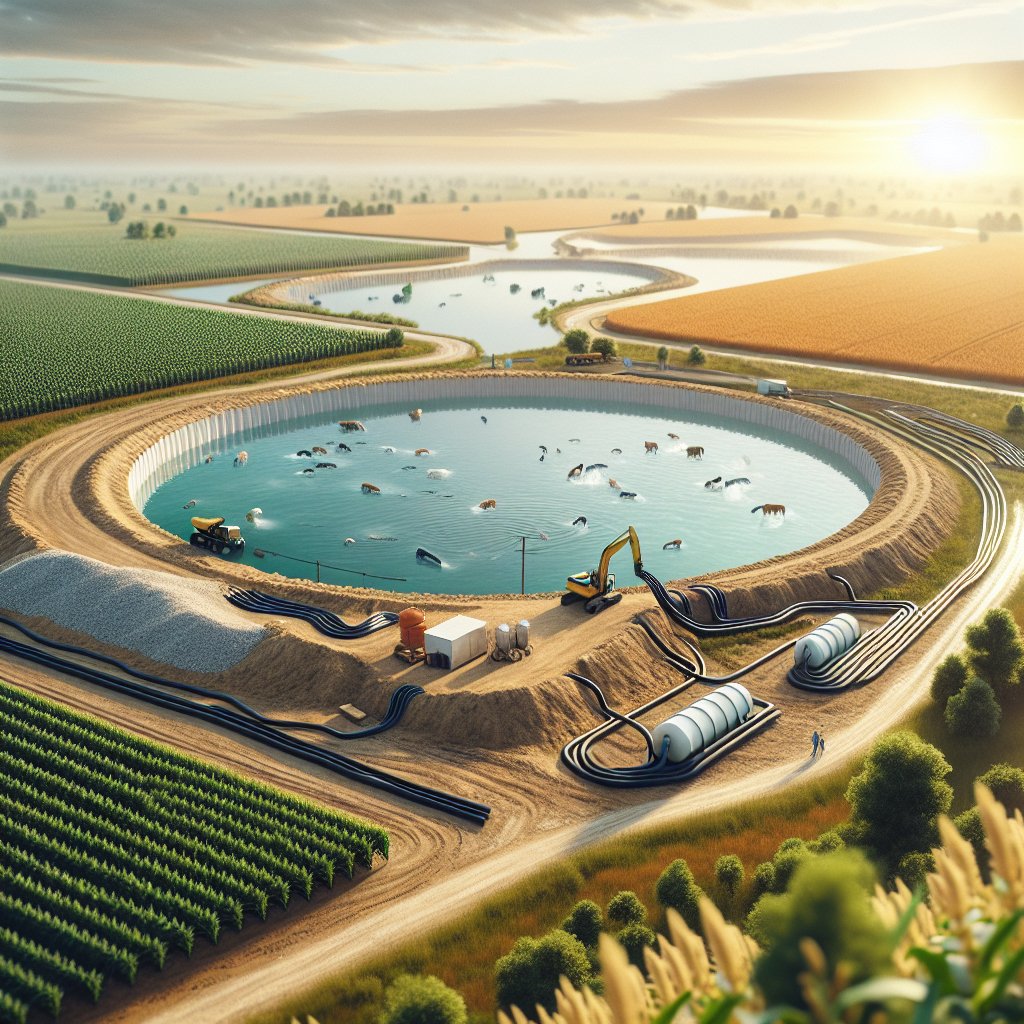
Creating a farm pond for irrigation and livestock is a strategic investment that can significantly enhance the sustainability and productivity of agricultural operations. A well-designed pond not only provides a reliable water source for crops and animals but also contributes to the ecological balance of the farm environment. This article will guide you through the essential steps and considerations involved in constructing a farm pond, ensuring it meets your agricultural needs effectively.
Planning and Site Selection
The first step in creating a farm pond is meticulous planning and site selection. The location of your pond is crucial as it affects water collection, storage capacity, and accessibility for irrigation and livestock. Begin by assessing the topography of your land. Ideally, the pond should be situated in a natural depression or low-lying area where water naturally accumulates. This minimizes excavation costs and maximizes water retention.
Consider the soil type in the potential pond area. Clay-rich soils are preferable as they naturally retain water, reducing the need for artificial liners. Conduct a soil test to determine its suitability. If the soil is too sandy or porous, you may need to invest in a liner to prevent seepage.
Accessibility is another critical factor. The pond should be easily accessible for irrigation equipment and livestock. Ensure there are clear paths for machinery and animals to reach the pond without causing soil erosion or compaction.
Additionally, consider the pond’s proximity to other farm structures and fields. It should be close enough to minimize water transport costs but far enough to prevent flooding or waterlogging of crops and buildings during heavy rains.
Design and Construction
Once the site is selected, the next phase is designing and constructing the pond. The design should reflect the pond’s intended use, whether primarily for irrigation, livestock, or both. The size and depth of the pond will depend on the water requirements of your farm. Calculate the volume of water needed for irrigation and livestock to determine the pond’s capacity.
For irrigation purposes, the pond should be deep enough to store sufficient water during dry spells. A depth of 10 to 12 feet is generally recommended to prevent evaporation losses and maintain a stable water temperature. For livestock, ensure there are gentle slopes or ramps for animals to access the water safely.
Engage a professional engineer or a pond construction expert to draft a detailed plan. This plan should include the pond’s dimensions, the type of dam or embankment required, and any additional features like spillways or overflow channels to manage excess water during heavy rains.
During construction, ensure that the pond’s embankments are compacted properly to prevent leaks. Use heavy machinery to excavate the pond and shape the embankments. If necessary, line the pond with clay or a synthetic liner to enhance water retention.
Incorporate features like a spillway or overflow pipe to manage excess water and prevent dam failure. These features are crucial for maintaining the pond’s structural integrity and ensuring it functions effectively during periods of heavy rainfall.
Water Management and Maintenance
After construction, effective water management and regular maintenance are essential to ensure the pond’s longevity and functionality. Monitor the water levels regularly, especially during dry seasons, to ensure there is enough water for irrigation and livestock needs.
Implement a water management plan that includes strategies for water conservation and efficient usage. This may involve scheduling irrigation during cooler parts of the day to minimize evaporation or using drip irrigation systems to reduce water wastage.
Regular maintenance is crucial to prevent issues like siltation, algae growth, and embankment erosion. Periodically remove silt and debris from the pond to maintain its capacity. Control algae growth by introducing aquatic plants or using environmentally friendly algaecides.
Inspect the pond’s embankments and spillways regularly for signs of erosion or damage. Repair any issues promptly to prevent leaks or structural failures. Additionally, ensure that livestock access points are well-maintained to prevent soil compaction and erosion.
Environmental and Legal Considerations
Creating a farm pond involves several environmental and legal considerations. Before construction, check with local authorities regarding any permits or regulations that may apply. Some regions have specific guidelines for pond construction to protect natural water resources and ecosystems.
Consider the environmental impact of your pond. A well-designed pond can enhance biodiversity by providing a habitat for various aquatic and terrestrial species. Incorporate features like shallow areas and vegetation to support wildlife.
Be mindful of potential environmental risks, such as water contamination from agricultural runoff. Implement buffer zones with vegetation around the pond to filter runoff and prevent pollutants from entering the water.
In conclusion, creating a farm pond for irrigation and livestock is a multifaceted process that requires careful planning, design, and maintenance. By considering factors such as site selection, construction techniques, water management, and environmental impact, you can develop a pond that meets your agricultural needs while contributing to the sustainability and ecological balance of your farm.

